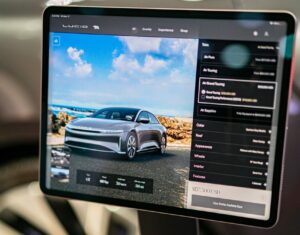
Home / EV Charging News / Electric Cars and Energy Equity: Discussing the potential of electric vehicles to promote energy equity by providing affordable and sustainable transportation options for underserved communities
Electric vehicles (EVs) have gained significant attention in recent years as a promising solution to combat climate change and reduce our dependence on fossil fuels. However, beyond their environmental benefits, electric cars also hold great potential for promoting energy equity by providing affordable and sustainable transportation options for underserved communities. In this article, we will explore how electric vehicles can contribute to energy equity and address the transportation challenges faced by marginalized populations.
Transportation inequity is a pressing issue that affects numerous underserved communities, perpetuating socioeconomic disparities and limiting opportunities for upward mobility. The lack of accessible and reliable transportation options in these communities creates a range of challenges that hinder individuals’ ability to access essential services, education, job opportunities, and healthcare. Understanding the scope of transportation inequity is crucial to comprehending the potential impact of electric vehicles in addressing this pressing issue.
Addressing transportation inequity requires comprehensive solutions that consider the unique circumstances of each community. Electric vehicles present an opportunity to alleviate these challenges by providing a sustainable, affordable, and accessible transportation alternative. By embracing electric cars and establishing a supportive infrastructure, we can create a more equitable transportation system that empowers underserved communities and enhances their quality of life.
Electric vehicles present a promising solution to address transportation inequities while promoting energy efficiency. Unlike traditional internal combustion engine (ICE) vehicles, EVs rely on electricity for propulsion, reducing or eliminating greenhouse gas emissions and local air pollution. By transitioning from fossil fuel-powered cars to electric cars, communities can significantly improve air quality and public health outcomes, particularly in areas with high levels of vehicle-related pollution.
One of the key advantages of electric cars is their potential to offer cost savings for underserved communities. Although the upfront cost of purchasing an electric vehicle may be higher compared to traditional cars, the long-term operational and maintenance costs are significantly lower. Electric cars have fewer moving parts and require less frequent maintenance, leading to reduced service and repair expenses. Moreover, the cost of electricity is generally lower than that of gasoline, resulting in substantial fuel savings over time. This cost-effectiveness makes electric cars a viable option for individuals and families with limited financial resources.
One of the significant concerns in the widespread adoption of electric vehicles (EVs) is the availability and accessibility of charging infrastructure. Addressing the charging infrastructure challenges is crucial to ensure that underserved communities have equal opportunities to transition to electric transportation. Here are some key considerations and strategies to overcome these hurdles:
Overcoming charging infrastructure challenges requires a multi-faceted approach that involves collaboration, innovative solutions, and targeted initiatives. By investing in equitable charging infrastructure, we can ensure that underserved communities have equal access to the benefits of electric transportation, thereby promoting energy equity and sustainable mobility for all.
To fully realize the potential of electric vehicles in promoting energy equity, it is essential to address barriers to access and ensure inclusivity. This includes targeted outreach and education programs to inform underserved communities about the benefits of electric cars, financial incentives or subsidies to make EVs more affordable, and policies that prioritize the installation of charging infrastructure in underserved areas. Collaborative efforts between government, automobile manufacturers, and community organizations can foster an environment where underserved communities have equal access to sustainable and affordable transportation options.
Electric vehicles have the potential to revolutionize transportation by promoting energy equity and providing affordable, sustainable transportation options for underserved communities. By transitioning to electric cars, we can not only reduce greenhouse gas emissions and improve air quality but also address transportation poverty and enhance the overall well-being of marginalized populations. To achieve energy equity, it is crucial to overcome the challenges related to charging infrastructure, affordability, and access, while fostering partnerships between various stakeholders. By doing so, we can create a future where electric cars empower communities and contribute to a more just and sustainable society.
$4,150.00 Original price was: $4,150.00.$3,990.00Current price is: $3,990.00.
$10,690.00 – $11,390.00

Your Power Management Partner for Over 25 Years Future Generations Depend on Our Decisions Today ™
2024 © All rights reserved by CyberSwitching